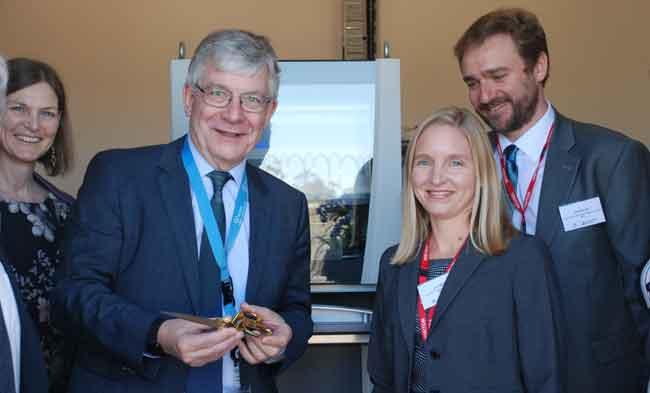
Published on the 24th January 2019 by ANSTO Staff
The Australian Nuclear Science and Technology Organisation (ANSTO) has joined a team, lead by the US Department of Energy’s Pacific Northwest National Laboratory (PNNL), to install a high resolution monitoring system at ANSTO’s medical isotope production facility in Lucas Heights, Australia.
ANSTO has become the second facility in the world to install a stack monitor of this kind, after Radioelements (IRE) in Fleurus, Belgium, with both facilities producing potentially life-saving medical isotopes, including Molybdenum‑99.
Medical isotopes are used daily around the world to visualize and diagnose cancer, heart disease and other serious ailments.
However, the production of these lifesaving medical isotopes can emit gasses that, while posing no threat to the wider community, have features that mimic those produced by a nuclear explosion.
PNNL is working with the U.S. Departments of State and Defence and the National Nuclear Security Administration to install highly sensitive detectors via a project called STAX, or Source Term Analysis of Xenon.
The STAX project is an initiative to support global monitoring for nuclear explosions by providing stack monitoring equipment to measure effluents from the stacks of nuclear facilities that emit radioactive xenon.
PNNL is working with nuclear medicine production facilities around the world to install monitors that will help understand more about the levels and timing of these emissions.
PNNL scientists are experts in developing methods of detecting extremely low levels of radioactive isotopes. While the monitors being installed in the stacks are off-the-shelf devices, they’ve been modified to provide even greater sensitivity for the isotopes of interest.
The use of the data from monitoring medical nuclear isotopes will help international governments and agencies to monitor signals of nuclear explosions around the world.
“These first of their kind sensor systems, one in each hemisphere, will help with international measurements for detecting underground nuclear explosions,” said Dr. Judah Friese, Principal Investigator at PNNL.
“While these are the first companies to install these systems, more installations are planned at locations around the globe to increase confidence in international nuclear explosion monitoring,” said Dr. Friese.
In Australia, ANSTO assembles and distributes more than 10,000 doses of nuclear medicine a week; needed, on average, by one in two Australians during their lifetime. Worldwide there are some 40 million medical procedures per year involving Technetium-99m, a short-lived isotope of Molybdenum-99 which gives off radioxenon in production.
“It’s important to understand the levels and timing of xenon released by medical isotope facilities the world over, which is significant but relatively uncharted until now,” said Dr. Friese.
Analysts at the Preparatory Commission for the Comprehensive Nuclear-Test-Ban Treaty Organization (CTBTO PrepCom) track airborne xenon through the International Monitoring System.
The CTBTO PrepCom notes that radioxenon is like the DNA of a nuclear explosion that provides forensic evidence for analysts.
Emmy Hoffmann for ANSTO explained how the opportunity to support the development or enhancement of nuclear forensic capabilities not only enhances regional nuclear security, but also the cohesive global nuclear footprint.
“ANSTO has considerable nuclear policy and technology expertise, and we are delighted to join our international counterparts in the STAX project and contribute on a global scale,” said Ms Hoffmann, who manages environmental monitoring at ANSTO.
Media enquiries, please email media@ansto.gov.au
About Pacific Northwest National Laboratory
Pacific Northwest National Laboratory draws on signature capabilities in chemistry, earth sciences, and data analytics to advance scientific discovery and create solutions to the nation's toughest challenges in energy resiliency and national security. Founded in 1965, PNNL is operated by Battelle for the U.S. Department of Energy's Office of Science. DOE's Office of Science is the single largest supporter of basic research in the physical sciences in the United States and is working to address some of the most pressing challenges of our time. For more information, visit PNNL's News Center. Follow us on Facebook, Instagram, LinkedIn and Twitter.